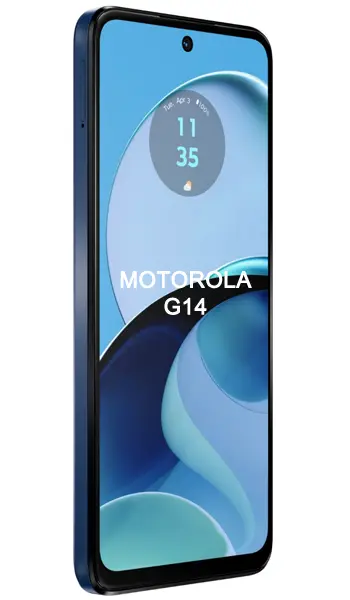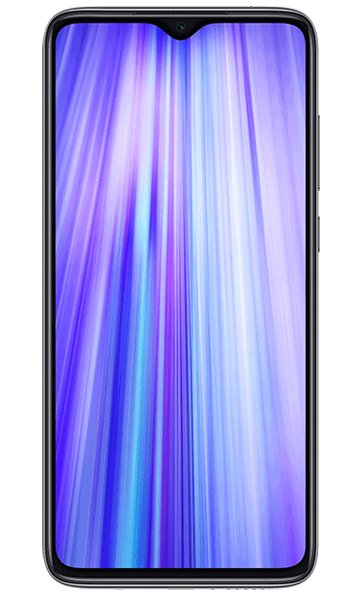Motorola Moto G14 vs Xiaomi Redmi Note 8 Pro Comparison and Differences
Smartphone 1

Motorola Moto G14
Smartphone 2

Xiaomi Redmi Note 8 Pro
Smartphone 3
Differences between Motorola Moto G14 and Xiaomi Redmi Note 8 Pro - Which to Choose?
Reasons to consider the Motorola Moto G14:
- Released more recently in 2023, offering potentially longer software support.
- Runs on a newer version of Android (Android 13 with a planned upgrade to Android 14).
- More modern Unisoc Tiger T616 chipset, which may offer better optimization for recent apps.
- Higher battery capacity of 5000mAh, which could translate to longer usage between charges.
- Offers a water-resistant design (IP52-rated).
- Supports 20W fast charging in India, potentially faster than the competitor's charging.
Reasons to consider the Xiaomi Redmi Note 8 Pro:
- Higher resolution main camera at 64MP and includes a quad-camera setup for versatility.
- Stronger GPU performance with a Mali-G76 MC4.
- Higher AnTuTu benchmark score, suggesting better overall performance.
- Comes with NFC support, which is useful for contactless payments and pairing devices.
- Includes infrared, allowing it to be used as a remote control for various devices.
Each model has its strengths; the choice depends on what features are more important to the user, such as newer software and battery life versus camera resolution and performance benchmarks.
Motorola Moto G14 or Xiaomi Redmi Note 8 Pro Specs Comparison
or
 Common specs
Common specs
| Brand and model | Motorola Moto G14 | Xiaomi Redmi Note 8 Pro | |
| Rating | (+0) | (+0) | |
| Release date | 2023, August 01 | 2019, August | |
| Dimensions (HxWxD) | 161.5 x 73.8 x 8 mm | 6.36 x 6.36 x 2.91 in | 161.3 x 76.4 x 8.8 mm | 6.35 x 6.35 x 3.01 in | |
| Weight | 177 g | 6.24 oz | 199 g | 7.02 oz | |
| Body Build | Glass front (Panda glass), plastic frame, plastic back | Front/back glass (Gorilla Glass 5) | |
| Case | buy from Amazon | buy from Amazon | |
| Colors | Steel Gray, Sky Blue, Butter Cream, Pale Lilac | Black, Red, Blue, White | |
| Battery | 5000 mAh, Li-Po, non-removable | 4500 mAh, Non-removable Li-Po | |
| Approximate price | $ 104.85 | 180 EUR | |
| Check price | from Amazon | from Amazon |
 Screen
Screen
| Technology | IPS LCD | IPS LCD | |
| Touchscreen | capacitive touchscreen | capacitive touchscreen | |
| Display colors | 16M | 16M | |
| Screen size | 6.5" in | 6.53" in | |
| Screen area | 102.0 cm2 | 104.7 cm2 | |
| Screen format | 20:9 (height:width) | 19.5:9 (height:width) | |
| Screen to body ratio | 85.6% | 84.9% | |
| Screen resolution | 1080 x 2400 px | 1080 x 2340 px | |
| Screen PPI /points per inch/ | 405 PPI | 395 PPI | |
| Screen protection | Panda glass | Corning Gorilla Glass 5 | |
| Other specs | - - |
||
| Screen protector | buy from Amazon | buy from Amazon |
 Camera and Video
Camera and Video
| Rear camera, main | 50 MP, Dual | 64 MP, Quad | |
| Camera specs | -50 MP, f/1.8, (wide), 0.64µm, PDAF -2 MP, f/2.4, (macro) |
-64 MP, f/1.8, (wide), 1/1.7'', 0.8µm, PDAF -8 MP, f/2.2, 13mm (ultrawide), 1/4'', 1.12µm -2 MP, f/2.4, 1/5'', 1.75µm (dedicated macro camera) -2 MP, f/2.4, 1/5'', 1.75µm, depth sensor |
|
| Functions | LED flash, HDR, panorama | Dual-LED flash, HDR, panorama | |
| Video | 1080p@30fps | 2160p@30fps, 1080p@30/60/120fps, (gyro-EIS) | |
| DxOMark Main Score | 84 | ||
| DxOMark Photo | 87 | ||
| DxOMark Video | 78 | ||
| Front camera, selfie | 8 MP, Single | 20 MP, Single | |
| Specifications | 8 MP, f/2.0, (wide), 1/4.0", 1.12µm | 20 MP, f/2.0 | |
| Functions | HDR | ||
| Video | 1080p@30fps | 1080p@30fps |
 Performance
Performance
| Operating system - OS | Android 13, planned upgrade to Android 14 | Android 9.0 (Pie); MIUI 10 | |
| Chipset | - Unisoc Tiger T616 (12 nm) | - Mediatek Helio G90T (12nm) | |
| CPU | - Octa-core (2x2.0 GHz Cortex-A75 & 6x1.8 GHz Cortex-A55) | - Octa-core (2x Cortex-A76 & 6x Cortex-A55) | |
| GPU | Mali-G57 MP1 | Mali-G76MC4 | |
| External memory | microSDXC (dedicated slot) | microSD, up to 256 GB (uses shared SIM slot) | |
| Internal memory | 128GB 4GB RAM, 256GB 8GB RAM | 64GB 6 GB RAM, 128GB 6GB RAM, 128GB 8GB RAM |
 Benchmark
Benchmark
| Antutu 10 Total | 358278 | ||
| Antutu 10 CPU | 121097 | ||
| Antutu 10 GPU | 70639 | ||
| Antutu 10 Mem | 74568 | ||
| Antutu 10 UX | 121097 | ||
| Antutu 9 Total | 220390 | ||
| Antutu 8 Total | 291733 | ||
| Antutu 7 Total | |||
| GeekBench 5 Single Core | 450 | 485 | |
| GeekBench 5 Multi-Core | 1589 | ||
| GeekBench 4 Single Core | 2562 | ||
| GeekBench 4 Multi-Core | 7739 |
 Communication and Connectivity
Communication and Connectivity
| SIM card | Dual SIM (Nano-SIM, dual stand-by) | Hybrid Dual SIM (Nano-SIM, dual stand-by) | |
| Network | GSM / HSPA / LTE | GSM / HSPA / LTE | |
| Bands | -2G - GSM 850 / 900 / 1800 / 1900 - SIM 1 & SIM 2 -3G - HSDPA 850 / 900 / 1900 / 2100 -4G - 1, 2, 3, 5, 7, 8, 20, 28, 38, 40, 41 |
-2G - GSM 850 / 900 / 1800 / 1900 - SIM 1 & SIM 2 -3G - HSDPA 850 / 900 / 1900 / 2100 -4G - LTE band 1(2100), 3(1800), 5(850), 7(2600), 8(900), 40(2300), 41(2500) |
|
| Speed | HSPA, LTE | HSPA 42.2/5.76 Mbps, LTE-A | |
| GPRS | Yes | Yes | |
| Edge | Yes | Yes | |
| Wi-Fi | Wi-Fi 802.11 a/b/g/n/ac, dual-band | Wi-Fi 802.11 a/b/g/n/ac, dual-band, Wi-Fi Direct, hotspot | |
| GPS | GPS, GLONASS, GALILEO | Yes, with A-GPS, GLONASS, BDS | |
| NFC | Yes (market/region dependent) | Yes | |
| USB | USB Type-C 2.0 | 2.0, Type-C 1.0 reversible connector | |
| Bluetooth | 5.0, A2DP, LE | 5.0, A2DP, LE |
 Music and Audio
Music and Audio
| Radio | FM radio | FM radio, recording | |
| Headphone jack | Yes | Yes | |
| Others | - Active noise cancellation with dedicated mic |
 Other features
Other features
| Sensors | - Fingerprint (side-mounted), accelerometer, gyro, proximity | - Fingerprint (rear-mounted), accelerometer, gyro, proximity, compass , Infrared port | |
| Other extras |
- 15W Fast charging -20W Fast charging (India) - Water-resistant design |
- Fast battery charging 18W (Quick Charge 4+) |
Reviews and Opinions on Motorola Moto G14 and Xiaomi Redmi Note 8 Pro
If you had to recommend one of these phones to a friend, which one would it be and why? Share your arguments using the Add Opinion button!
